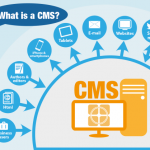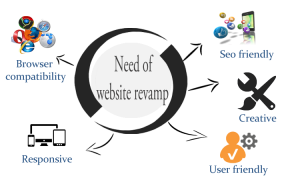How the web designer and the web programmer depend on each other?
Sometimes it is exceptionally hard to pick sides of the two when you are required to pick a profession that includes the web. It makes you invest a considerable measure of energy considering every option where and what precisely you will fit on to seek after you web leisure activity. If you like spending your time in the web and involving yourself so much in the designing, certainly you shouldn’t be stressed any further. What you need to understand is the needs of your intended career and simulate the level of interdependence of related professions like the web design and web development.
Have you ever wondered what your profession will be like after finalizing studies? The content may seem to be same during the introductory stages but passes, you realize the exact expectations try to change. However, the level at which they differ will be minimal as both web designers and web programmers are meant to complement each other’s activity. Sometimes people argue that they can be as independent as possible since the have the most basic .the web designer is involved in the front end web design while the web programmer focuses on the back end development.
Front End Developer (web designer) focuses on markup languages like HTML, CSS, JavaScript, and light back-end work. They involve other disciplines of design as the art and graphic designers, visual designers and the designers, and the web developer to realize the best website. Their main job is to make sure thy design a quality UI and UX purposely to make good visuals. This will lead to creative productions of the website to keep the competitiveness of the web market on check.it also supports one of web design principles such as resource management.
A good design should be the one that take all the following things into account; web specification, purpose and objective statement, web elements-audience information and then combine them so as to produce a web implementing plan. These web design and specifications are used to create a working web by the web implementer.
Web designers make many choices about how to best achieve the effects called for by the web planning process, objective statement, audience information, and the purpose. Web designers also draw their knowledge on a repertoire of techniques for linking, packaging, and cueing information using one or more design methodologies.
Ordinarily, developers are talented in programming dialects, for example, PHP, ASP, Ruby on Rails, Python, HTML, CSS and all the more relying upon what they represent considerable authority in and their experience level. The nice thing about being a good developer is that since their skills are in such a high demand then any programmer with a good portfolio can easily get a coding job.
The web developers (back-end developers) are concerned with launching websites, updates, and maintenance, among other things. All of that works to support the front-end of the website. The back-end has three parts to it: server, application, and database.
After the designer has finished working on the visual and layout of the web, the back end developer takes the design and involves it with a lot of technical aspects of the website. Good looking website depends on the design, but the designer depends on the developer to realize his/her good job. Besides, he/she requires security setups for the website that are laid down by the developers.
How to choose the right CMS for your Website

What is CMS, how does it works?
One of the most commonly used web development tools today is a content management system (a.k.a. CMS). This is a web application that allows you to update your website quickly. Typically,  there’s an admin area that’s referred to as the back-end where these updates and any changes occur. Once published, these things are then displayed on your website’s front end.
there’s an admin area that’s referred to as the back-end where these updates and any changes occur. Once published, these things are then displayed on your website’s front end.
Reasons to Use a CMS
There are many reasons why you should use a CMS, but the most important reason is that it offers a user-friendly interface with which you can easily add and edit your website’s content. You’ll also discover many plugins that you can use.
Most of the plugins are easy to search down and install too. It’s important to know which of these you’ll need before deciding upon a CMS to use. Doing this in the beginning ensures that you’re as productive as possible because the correct tools are right at your fingertips. While this will require you to spend some time doing research, it will save you a lot of money in the future.
Once you’ve decided whether you’re building a blog, eCommerce site, or website and have started in on your research, you should reach out to some CMS online communities for help. Therein you’ll find folks that know both the advantages and disadvantages of the various options available.
One of the main disadvantages that you’ll oftentimes hear about when discussing a “free” open source CMS is the lack of technical support, which is why many of these CMS communities have sprung up in the first place. They are there to offer help with technical problems, as well as support when necessary. The most popular open source CMS communities are quite large. Therein you’ll find people who will help you regardless of how much experience you may or may not have.
Reviewing the Most Popular CMS Available Today
There’s a growing demand for these CMS today. As such, it should come as no surprise that there are dozens of them available for you to choose from. Since this can make your choices seem a bit overwhelming, here is a brief overview of the most popular systems:
- WordPress is the most commonly used CMS today. First released in May 2003, now more than 14.7% of Alexa’s “Top 1 Million” websites are using it. There are a lot of plugins and extensions available that you can easily integrate from your Admin panel. Many of WordPress’ users have joined together in active communities throughout the worldwide web.
- Drupal is also quite popular because it’s so powerful. First released in 2001, today about 2.1% of all websites are using it. There are a lot of free extensions and modules that you can use with Drupal. Many of these you’ll learn about in the large online community that has formed to discuss technical issues and support one another in the use of this CMS.
- Magento is also very powerful. Their free version is known as “the Magento Community Edition.” It was first released in 2008 and since then it’s quickly become one of the most popular choices for eCommerce websites. Over the years, there’ve been a lot of extensions created to add more functionality and features to this CMS. Of course, it too has a large open community that’s actually full of both certified and uncertified developers alike.
- OpenCart is newer in the marketplace, but it’s quickly becoming popular. It’s a simple CMS whose Admin panel is easy to use, and for which there are a lot of extensions that give you more website functionality. There’s also a large online support community available.
DEVELOPMENT,eCommerce,ONLINE MARKETING,Website DESIGN
7 Characteristics of a Great Ecommerce Website
Are you ready for selling online?
When you are ready to take your company online, you will need to construct a high-quality, detailed website that will let your potential customers know who you are and what you represent. There are several characteristics that every eCommerce website should have in order to be successful. If you want to make a good first impression with your customers and clients, while also building up your company’s online reputation, you will want to pay attention to these seven important factors. More…
BUSINESS,DEVELOPMENT,Website DESIGN
3 Important Factors to Bear in Mind Before You Build a Website

Having a website for your business long ceased to be a choice; the only question that remains is what kind of website you want to build. We are in the Information Age, and since making an entrance into our lives over 20 years ago, the Internet has revolutionized everything about how we can access information, making life much easier.
There are many factors that come to mind if you want to build a website. The elements, design, layout and even content will all be guided by the purpose for which the site exists. Every aspect of the site must work towards furthering this goal, so that the synergy between different aspects results in a site that is worth displaying to potential clients in your target market.
Below, we offer three pointers to guide you through the planning phase before embarking on any actual design work. If you get the plan right the first time, everything will seamlessly flow from there.
DEVELOPMENT,ONLINE MARKETING,SEO,Website DESIGN
How to Ensure a Successful Website Revamp

So you are thinking about revamping your website?
Why are you revamping? Are you bored with your current site already? Or do you think it could look better?
Whatever you have in mind, the bottom line is: You want to revamp your website and you are certain it will work. But it cannot work if you don’t carry out the renovation correctly. Below are steps that will help you to ensure a successful website revamp:
- Set Clear Goals
Your website is naturally the determinant of how many leads you generate. Therefore, as you think about redesigning your website, generating as many leads as possible should be at the top of your mind.
Think about the business goals and then what you aim to achieve by redesigning your website. Set clear and SMART goals concerning the new site.
- Take the Stock of Existing Site
Up until now, you have been building assets each day with the best intentions. These assets include blogs, inbound links and the content. You don’t want all that to go to waste. In fact, you want to use those assets to build a better and more functional website.
To protect these assets, take a stock of them and ensure that they link into the redesigned website. More…





Recent Comments